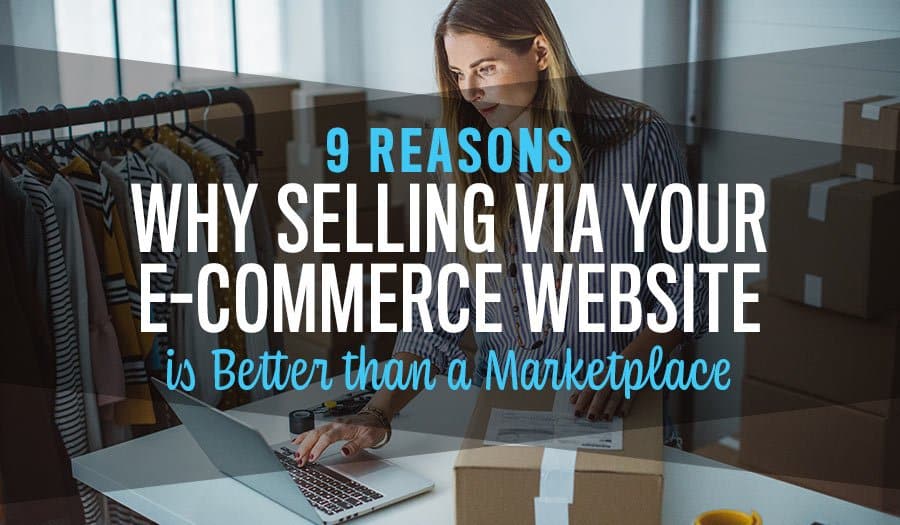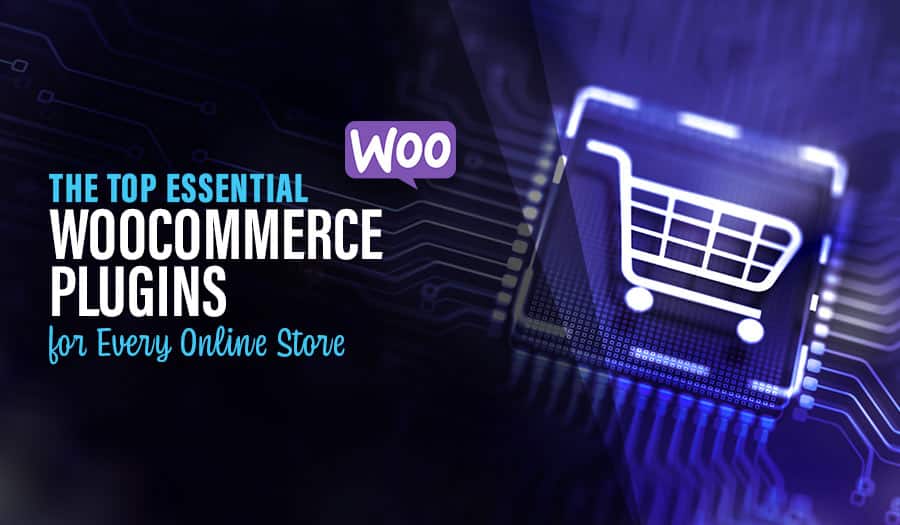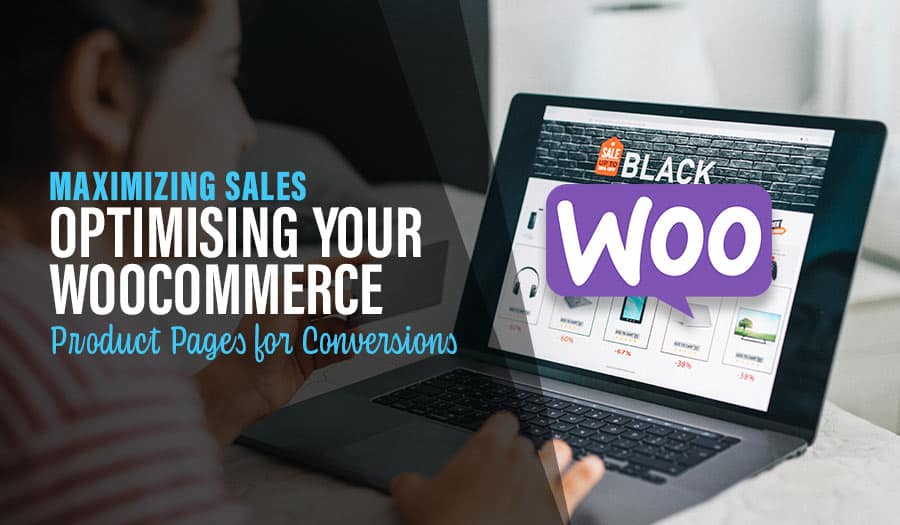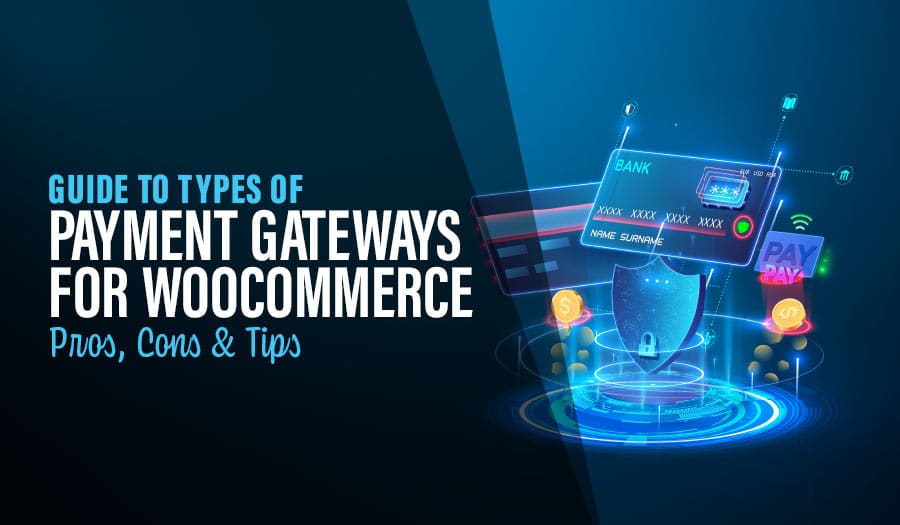Right now, Amazon.com has roughly 2.5 million actively selling vendors working through the platform. eBay, in its distributed populist way, has even more. Etsy is a hotspot for handmade goods, and there are more than a few tertiary marketplaces for niche or general goods. These shared e-commerce platforms are a good way to build early brand awareness, get those first product reviews, and make use of an existing selling infrastructure. Here’s why Selling via Your E-Commerce Website is Better than a Marketplace.
But that doesn’t mean you should sell exclusively on other companies’ platforms. When it comes to building your reputation as an online brand and cultivating your own audience of buyers and fans, it’s necessary to sell on your own website in addition (and eventually instead of) on the big commercial marketplaces.
Why do you ask? Why should you build your own website and provide a private e-commerce experience when marketplaces like Amazon and eBay are available? The reasons to localise are surprisingly good.
Why Selling via Your E-Commerce Website is Better than a Marketplace
- Avoid Platform Fees Up to 60%
- Free from Restrictive Listing Policies
- Create a Superior Customer Experience
- Cultivate and Keep Your Own Customers
- Build Your Independent Brand Identity
- Track Your Own Performance Analytics
- Greater Control Over Promotions and Events
- Turn Buyers Into a Customer Community
- Use Your Website as a Brand Platform
Why Selling via Your E-Commerce Website is Better than a Marketplace
1. Avoid Platform Fees Up to 60%
First and foremost are the marketplace fees. Using the preexisting audience and infrastructure comes at a cost, sometimes nearly half the revenue. 30% fees are common for beginners, and some brands charge up to 60% fees to use high-demand marketplaces. If you can direct your customers directly to your brand website instead of buying through a marketplace, you won’t have to pay platform or commission fees for each one of your already hard-earned customer purchases.
Earn your entire revenue and be able to price competitively without having to calculate for the platform’s cut. You can charge the same amount or less than you did on the marketplace while keeping significantly more revenue.
2. Free from Restrictive Listing Policies
Another serious limiter when selling in a commercial marketplace is restrictive policies. You may not be allowed to ask for reviews or offer incentives as you would on your native site. You may not be allowed to use certain words or make certain guarantees. You might be limited in using the categories and designations on a shared commercial platform. These are ways that the platform prevents sellers from gaining an advantage or tipping the balance of marketplace influence.
However, on your own website, you can build whatever listings best suit and sell your products. You can ask for reviews and offer special deals. You can have as many or as few photos, post product videos, and share information that might not be permitted as a marketplace seller. You can use the categories and tags that make the most sense for your products and are intuitive to your audience. And you can change your tactics without having to check with a marketplace list of restrictions.
3. Create a Superior Customer Experience
E-commerce marketplaces are also limited by their own platform. The experience customers get from shopping is the same from one seller to the next. The product page layouts are the same from one product to the next. The search features, listing content, and useful shopping widgets are all limited to the marketplace standards.
Your customers could have more. With a native e-commerce website, you can design something superior to the shared marketplace. You can craft your website into a customer experience that is smoother, more enjoyable, and better at up-selling than the generic platforms and shared marketplaces.
4. Cultivate and Keep Your Own Customers
The entire business plan of an e-commerce marketplace is to cultivate customers for the marketplace itself; customers the sellers are dependent on. When your buyers can only find your products on the marketplace, they must come to the marketplace to shop for your brand. Worse, you must then pay the commission to continue getting sales that your products earned on their own.
This is why marketplaces are better to jump-start new brands and for marketing purposes, but they are training wheels. As your brand gains popularity, it will quickly become time to make your own e-commerce platform to fully benefit from your brand success.
With your own website, those customers who come for your products or services will begin to buy directly instead of through the platform. Give your customers a way to show their loyalty and give yourself a way to cultivate your customer relationships. Your own e-commerce platform is how your loyal customers will show their loyalty, and through this website, you can reward them more directly than through a marketplace.
5. Build Your Independent Brand Identity
Building a distinctive brand under the roof of a shared commercial marketplace can also be difficult. Because each listing page looks about the same, you have very little room to show off your brand and build that awareness with your audience. Even with customers who have already bought and enjoyed your products. It often requires graphic design creativity just to clearly display your brand to buyers, which is still often “below the fold” on product pages.
Your own website gives you the freedom to truly build your brand identity. Every colour and every graphical asset used in your native e-store website will reinforce the brand in the minds of your customers. Your blog can be branded. Your shopping and listing pages can be branded. Your home page most certainly will be. Customers who are happy with your products will clearly remember a well-branded and smoothly designed company website.
6. Track Your Own Performance Analytics
Analytics are what tell you how well your products and marketing are doing online. Analytics can tell you how many customers click your product link and how long they spend reading product descriptions. The insights from good website analytics are essential to honing both your web design and your marketing efforts. The problem is that many host e-commerce marketplaces only provide selective analysis options. You can’t analyse all of their native data because you are a guest on the website, not a dev for the marketplace. But you also lose access to those important insights that your own local analytics could provide.
When shoppers are coming through your brand’s e-commerce website, you can track every scrab of data in your analytics dashboard. You can track visits, bounce rate, and conversion rate. You can follow a heat map of customer activity on each page or a graph of pages to show a customer’s flowing online experience route through the website. You have the power to collect and use data when the e-commerce site is your own.
7. Greater Control Over Promotions and Events
Most e-commerce marketplaces have some serious restrictions on promotion. For the most part, you might lower the price or update the colour options, but that’s about as festive as marketplaces get for sellers. You may not even be allowed to offer specific types of promotions because of marketplace policies. That’s all fine, it’s what happens when you sell under another brand’s roof. But you could have that freedom to promote and host events instead.
With your own website, your e-commerce brand can take full control of the customer engagement tactics you use. You can announce things on the homepage and use tactics not permitted in your other favourite marketplace platforms. Craft your discount and bonus offers to best motivate your buyers and host deal-inspiring events both online and in person.
8. Turn Buyers Into a Customer Community
Marketplaces also have a way of limiting direct contact with your customers and forcing marketplace customers to build communities through the marketplace platform. But your buyers may form a more cohesive group and a more loyal audience than the marketplace can support. A native website makes it easier to host a forum, a blog, and an idea centre where your customers can become more than just buyers. They can come together to form a brand-supportive community.
Depending on the personality and values of your brand, this might be a business-focused group, an emotionally supportive group, an idea-swapping group, or so much more. Without the limitations of a marketplace platform, your brand can become the locus point of a strong online community by meeting on your website.
9. Use Your Website as a Brand Platform
Finally, selling your products on your own e-commerce web store gives you the opportunity to branch out. Your website doesn’t have to be limited just to the web store. It can also become a platform for hosting and selling content. It can become an information and customer service centre that connects smoothly between your customer’s orders and the support services they need. Your website can launch new products and new types of products.
However you want your brand to grow, it can do so more easily on a website that you design and control. If you want to branch out or use your website as a platform to promote every aspect of your brand, you can.
E-commerce marketplace platforms have their role in the industry, but as you can see, Selling via Your E-Commerce Website can be rewarding. They are good for independent sellers and new brands that don’t have buyer magnet power yet. They are great for promoting a small selection of your products to lure marketplace shoppers into buying directly. But they should never be the only selling avenue for a brand that is gaining recognition and buyer loyalty. With your own e-commerce site, you can sell directly to customers and cultivate a truly loyal and supportive relationship with your customer community. For more great website insights or for a consultation on building the best site for your e-commerce brand, contact us today!
Take your online store business to the next level with a Pixel Fish Ecommerce Website.
Check out some of our latest Ecommerce Website Design projects.
Further Reading
7 Can’t Miss Digital Marketing Trends
5 Ways to Streamline Your Business to Work and Collaborate Remotely
Read More
6 Quick Tips on How to Choose a Web Designer
9 Essential E-commerce Website features
11 of the Best Divi Wordpress Theme features you should know
How regularly should my business publish on Social Media?
10 ideas for easy blog topic generation
Top 8 Advanced WordPress Features and Plugins to Beat Your Competition
7 Top Ways E-Commerce is Changing for Business
Real Estate and Property Buyers Website Design
Flying High: How to Promote your website after launch
How to Create a Saleable Business Using Your Website
9 Reasons to Use WordPress for E-Commerce Website Design



